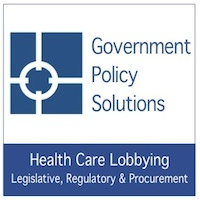
Gallagher weighs in on federal COVID-19 response
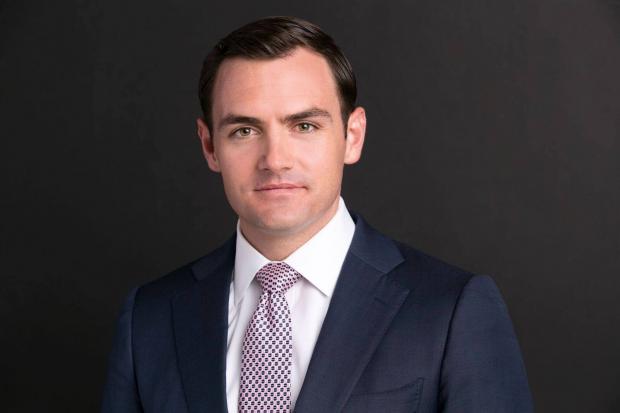
The U.S. House is set to sign off on a $2 trillion package aimed at responding to the COVID-19 pandemic.
Rep. Mike Gallagher, R-Green Bay, spoke to Wisconsin Health News Thursday about the measure and the response to the new coronavirus.
“At the end of the day, as we consider these vast federal responses and state responses, ultimately, this is going to come down to what every individual Wisconsinite can do to do their part,” he said. “Let’s hope that, a month from now, we can look back and say, ‘We all stepped up. We helped those who were most vulnerable. We did what was necessary to wash our hands, social distance, improvise, adapt, overcome and defeat this thing.'”
He added that when the “dust settles,” there are questions about how dependent the nation has become on manufacturing in China for medical equipment and pharmaceuticals, how fragile key parts of the emergency response system are and why the nation wasn’t able to do testing more quickly.
“There are bigger questions we’ll have to ask in the long term but it all depends on our ability to get through this in the short term,” he said.
Edited excerpts are below.
WHN: Do you support the latest stimulus bill?
MG: I think there are parts of it that are good. I mean we created this burden on small businesses in the bill last week that was ill-considered. This at least tries to rectify that.
I think the most important part of the package is the direct appropriation for the healthcare system, by being able to ramp up the production of (personal protective equipment), basic testing supplies, things like that. My view is that until we win the war on the front lines, no amount of economic relief will be enough to cover the cost. So you have to defeat the disease first and foremost. And from everything I’ve seen in the healthcare portion of it, I like that. It also provides direct grants to states and local communities so they can do everything possible to slow the spread.
I do think if the government forces you to shut down your business or your job has evaporated because of the shutdown itself, you’re entitled via the Takings Clause of the Fifth Amendment to “just compensation” from the government…The trick is it’s hard to make this targeted because they’re using tax filings from last year to determine whether you’re eligible for the immediate $1,200 cash payment. And there may be some people who are at an income level where they qualify but because they can telework, they’re still getting a check. So they’re not affected, but they’re still going to get a check. There are other people who have probably made more money, like $100,000 last year, whose job or restaurant or bar closed down overnight who aren’t going to get a check. So there are definitely problems with the approach. But in general, I do believe we are going to have to provide as much immediate relief and assistance to the small businesses and the workers that we forced to shut down.
Now, this may be the least bad way to do it. In other words, this is the quickest way to get the money out the door. But it is a very blunt instrument that’s not going to be targeted.
The other issue I’m trying to figure out, which I think is going to be crucial for our small banks and business in Wisconsin is whether they allow the (Federal Deposit Insurance Corporation) to provide unlimited insurance for transaction accounts, which is a way that we did actually did successfully in 2009 at keeping money in small banks. And the language right now is unclear. So I’m trying to get some clarification on that. If it doesn’t get where I need it to go, I’m going to try and see if I can fix it somehow. But overall, the bill is passed for effective purposes. They’re going to either do a (unanimous consent) or a voice vote.
I just would say, if the cost of shutting down our economy for a month or maybe six weeks, is $2 trillion, it should add urgency to our efforts to win this war on the front lines because we can’t keep on cutting that big of a check to cover the cost.
WHN: Does the bill do enough to support healthcare providers on the front lines?
MG:
It definitely does a lot. There’s almost a $100 billion in direct appropriation to the healthcare system. That is a massive amount of assistance. Whether it’s enough, we’ll see. I’m probably most encouraged by the amount of manufacturers in Wisconsin who are stepping up to try and figure out if they can sort of shift their factory even if they don’t make medical goods right now to, for example, start making masks that are (Food and Drug Administration) approved. We basically waived almost every regulation to try and allow that to happen. It’s still a bit messy right now. But we’re not where we need to be in terms of testing.
My own view is that if you asked me what my top three priorities right now, it would be testing, testing, testing. And then PPE would be fourth place. But we need testing because testing gives you data. Data gives you intelligence. And intelligence is how you win any war. We don’t know whether we’re winning or losing right now because we’re fighting blind in many cases because our testing is not where we need it to be. And so my hope is that direct appropriation will allow all of the state’s access to the testing materials they need, whether it’s swabs or whether it’s the reagent to process the test because we have hospitals that are ramping up to build in a manner of hours mobile testing facilities, but we’re still not getting the exponential increase in testing that we need to be successful.
WHN: You wrote in an editorial this week that “likely no amount of federal relief will save us from another great depression.” What are your recommendations?
MG: I understand the need for this 15-day shutdown. I have been screaming about coronavirus since at least January when I was calling for a targeted travel ban and talking about Chinese malfeasance. I am not one of these people who thinks this is just the flu or is downplaying it.
However, I think we need to start now planning for what the next phase of this looks like. Because the fact is that we can’t stay shut down forever. The costs are just too much. And I have to believe there is a middle ground going forward between total shutdown and millions of lives lost. On the other hand, I think the next phase of this is going to have to be a bottom-up approach that’s unique to every single state where we solve very difficult problems. Like how do we get our kids to finish the school year when school is closed right now? How do we use the data that we’re going to get from testing to be able to adjust surge strategy in near real-time and isolate the people that are most vulnerable or people that are infected, do contact tracing, leverage (artificial intelligence) in order to process test results or shortages of equipment? And how do we eventually get to a point, hopefully within the next few weeks where we can start trusting our businesses to practice social distancing within the unique context of their organization? That’s what I think the next phase of this looks like, and that’s the debate that I’m trying to spark right now.
WHN: This week, you led the state’s House delegation in urging the Department of Defense to use its resources to make critical medical supplies available to the state. Have you gotten a response?
MG: I haven’t gotten an official response yet. I will say to DoD’s credit, they have tried to do things like donate their ventilators to (The Department of Health and Human Services), which (the Federal Emergency Management Administration) can distribute to the states if necessary. They’ve activated their hospital ships to potentially provide support to cities that are on the coast, New York being the most urgent one right now. There’s the discussion about how we could better use the Army Corps of Engineers to start building surge capacity or field hospital capacity. That’s all good. But in the letter, I laid out a series of questions where we’re trying to figure out how the DoD is coordinating with HHS and FEMA and what more they can do going forward.
Now, I will say the DoD’s primary job is to defend us from foreign attacks. So we certainly don’t want to do anything that would force the DoD to take its eye off the ball of the very real enemies we have abroad. But to the extent it’s possible, we want DoD to do everything it can to partner with HHS and FEMA so that we can get at this thing, we can bend the curve and we can slow the spread and it doesn’t cost us more lives or resources down the road. So I know that Secretary (Mark) Esper is taking it seriously. With the Defense Production Act, the president now has enormous authorities to do certain things. We’re essentially on wartime footing. But I just want to make sure we’re using these authorities wisely and smartly.
WHN: Gov. Tony Evers issued his safer-at-home order earlier this week. Do you think that was necessary?
MG: I think there’s still a little lingering confusion about the details in the safer-at-home, shelter-in-place order. You know, I’ve said for this 15-day period, I do think it makes sense for all of us to hunker down, follow the guidance of the (Centers for Disease Control and Prevention) and President Trump and see where we are after then.
Now, my hope is that Gov. Evers will use the information we’re getting in that time period, and testing data and information, in order to make adjustments to his strategy going forward. In other words, I don’t think we can just stay shut-in for 60 days without any adjustments going forward or if indeed that’s necessary. It would mean that we’re not making progress, which we need to make because we’re spending an enormous amount of money and incurring a huge cost on all of our families, our communities and our small businesses in order to buy time for those on the front lines to defeat the enemy.
So I hope that when we get to day 15 of this effort, Evers will look at his 60-day approach and say, ‘OK, here’s the good, the bad and the ugly. Here’s how I can evolve.’ And we need to be a learning organization. We need to be evolving constantly and again, I keep coming back to this point, and it reflects my bias as a military intelligence officer, but you need to use intelligence and reconnaissance in order to fight smarter every single day. So a blanket strategy for 60 days right now won’t make sense because hopefully we will be evolving every single minute every single day.
WHN: There are a few that are questioning the importance of the measures. Do you have concerns about that?
MG: In the military, you say, ‘Hope for the best and plan for the worst.’ Right now, we’re planning for the worst. We’re doing everything we can to slow the spread. It’s painful, but necessary. I think there are some people, we’ve seen in Florida, who refuse to take this seriously. They’re still on spring break, partying. There seems to be a weird generational disconnect. My parents’ generation that doesn’t seem to be taking it as seriously. My generation, millennials, do seem to be taking it more seriously. I think the best scenario is a month from now, this thing passes and we’re like, ‘Wow, we overreacted entirely.’ That would actually be a good thing because it would mean that there wasn’t as much death and destruction.
I think there’s a legitimate debate to be had, and I’m trying to be constructive about what is the right middle ground. How do you do what’s necessary, and to heed the advice of our health experts, without proactively forcing businesses to completely and irrevocably shut down? Because you’re dealing with lives in that instance too. You’re dealing with mental health, physical health, emotional health and financial health.
You don’t want to fall into, ‘Oh, this is nothing, don’t worry about it, this is all fake news,’ on the one hand, or you know, ‘Millions and millions are going to die, you’re an evil person’ on the other hand. There’s got to be a constructive middle ground. I think most Wisconsinites find themselves somewhere in that middle.
Wisconsin Health News is removing the password on all stories related to the coronavirus. For the latest developments follow us on Twitter at @wihealthnews or check out our website. For complete healthcare coverage, sign up for a free trial to our daily email newsletter.

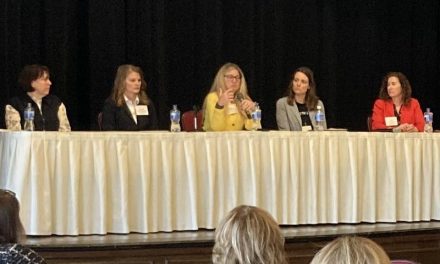














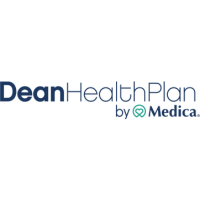

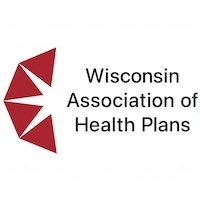





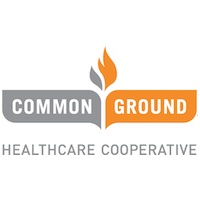

.jpg?bwg=1612548324)



